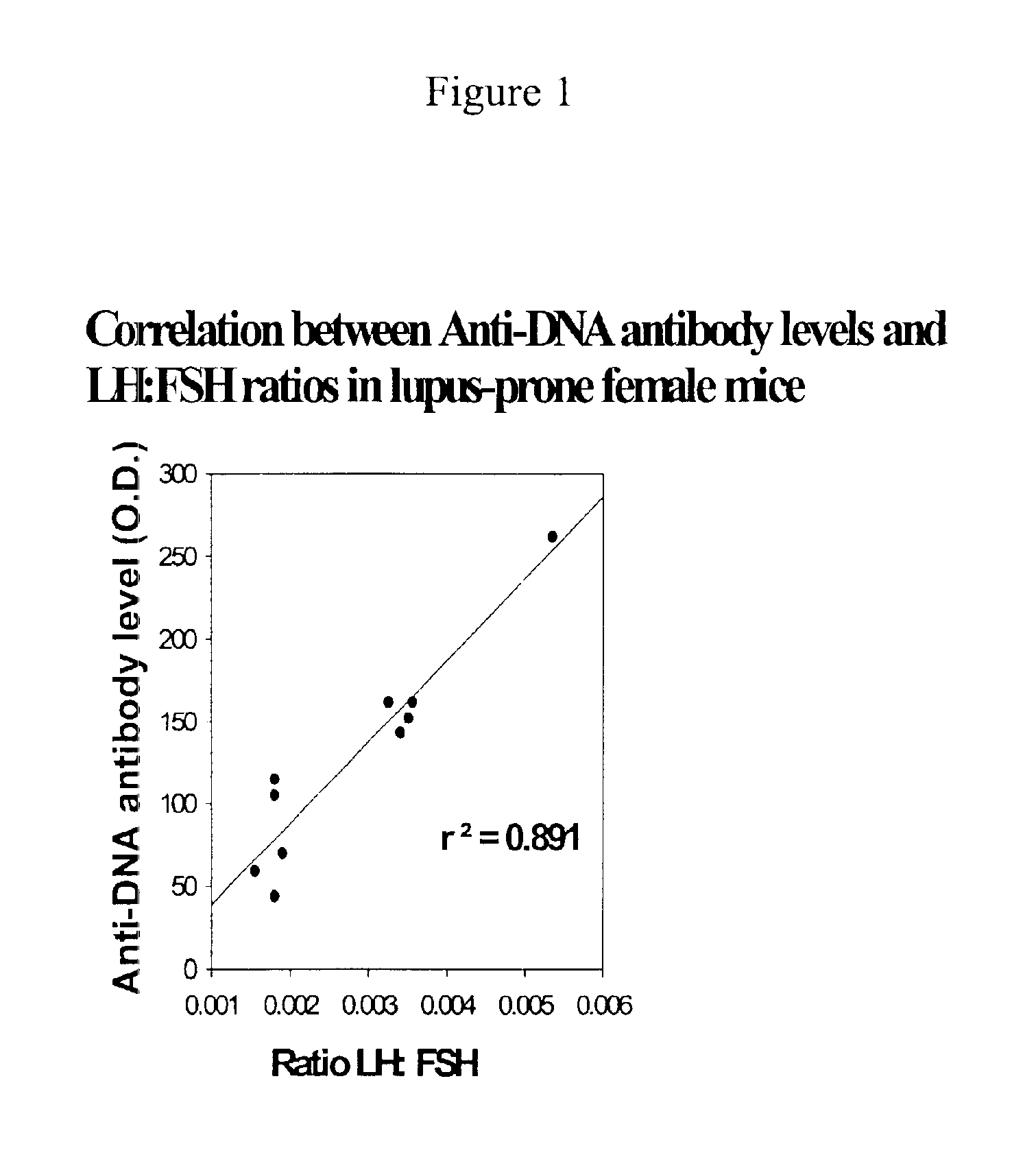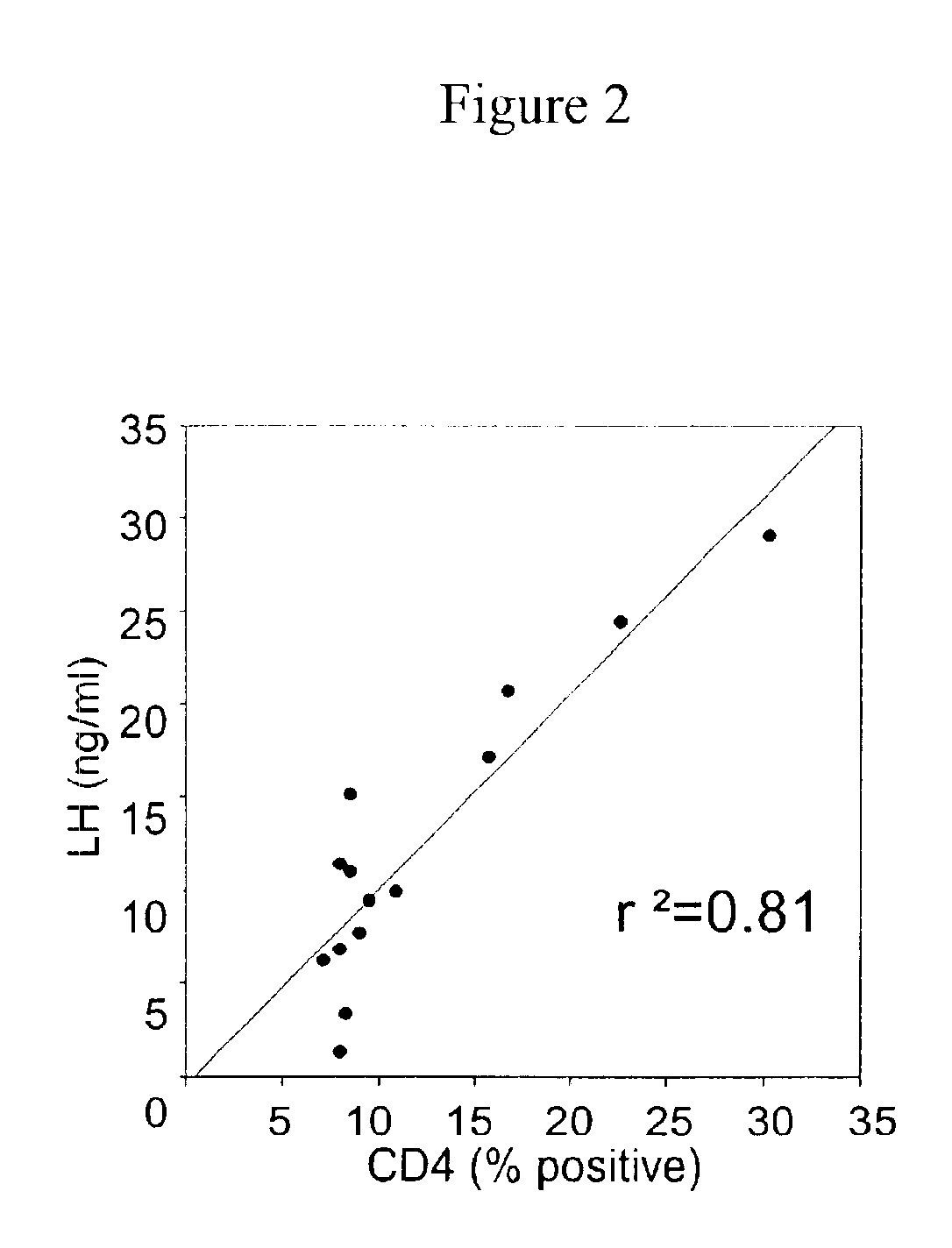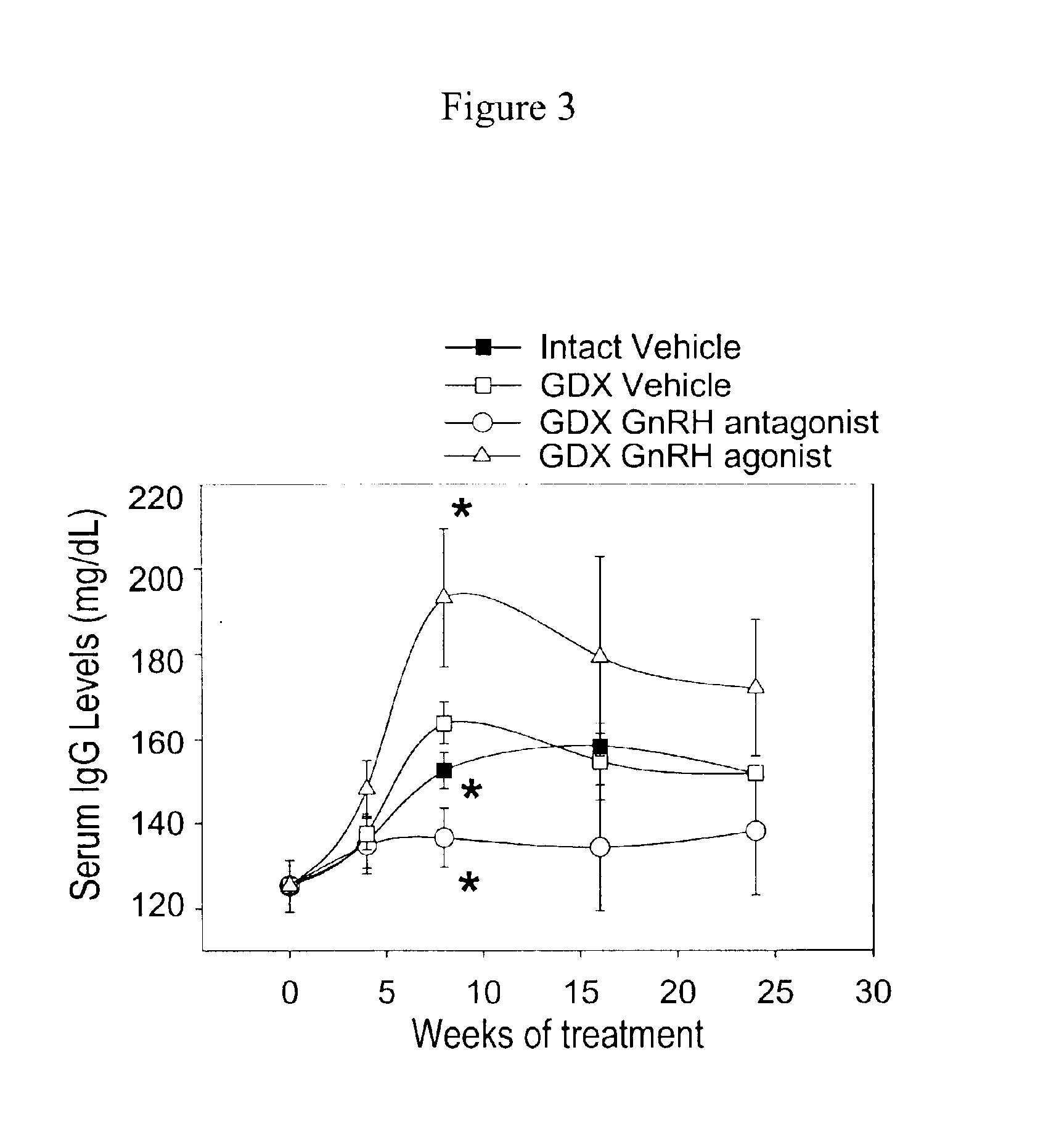Prevention of diabetes and prolongation of the honeymoon phase of diabetes by administration of GnRH antagonists
a technology of gnrh and antagonists, which is applied in the direction of peptide/protein ingredients, extracellular fluid disorder, metabolic disorders, etc., can solve the problems of affecting the normal function of the body, and literally starving the body's cells to death, so as to reduce the incidence of the disease, delay the onset of the disease, and reduce the rate of islet cell death
- Summary
- Abstract
- Description
- Claims
- Application Information
AI Technical Summary
Benefits of technology
Problems solved by technology
Method used
Image
Examples
example 1
[0026]In this example, intact and gonadectomized non-obese mouse model of diabetes (NOD mouse) mice were treated with GnRH agonists and antagonists to determine the effect thereof on serum IgG levels and the incidence and onset of diabetes.
Methods
[0027]Mice. The well-characterized NOD mice were used throughout the study. Male and female mice were purchased from the Jackson Laboratory (Bar Harbor, Me.). These mice are art-recognized animal models used in diabetes research. (Makino et al., (1980) Breeding of a Non-obese Diabetic Strain of Mice. Exp Anim, 29, 1-13; Miyazaki, A. T., et al, (1985) Predominance of T Lymphocytes in Pancreatic Islets and Spleen in Prediabetic Non-Obese Diabetic (Nod) Mice: a Longitudinal Study. Clin Exp immunol, 60, 622-630)
[0028]Experimental Design. Both intact and gonadectomized mice (GDX) were used. Gonadectomies were performed to demonstrate an increase in the incidence of diabetes and also order to eliminate the variable of sex hormone production. To c...
example 2
[0041]In this example, gonadectomized NOD mice were treated with either the GnRH antagonist Antide or the vehicle (50% propylene glycol and 50% double distilled water) to determine differences in the rate of lymphocytic infiltration of islet cells.
Methods
[0042]Mice. The well-characterized NOD mice were used throughout the study. Male and female mice were purchased from the Jackson Laboratory (Bar Harbor, Me.). Again, these mice are art-recognized animal models used in diabetes research.
[0043]Gonadectomy. Males were gonadectomized via a single scrotal incision under pentobarbital anesthesia.
[0044]Injections. The mice were injected subcutaneously in the nape of the neck six times weekly, in the a.m., with 100 μg of the GnRH antagonist in 100 μl of vehicle consisting of 50% propylene glycol and 50% double distilled water.
[0045]Pancreatic Histology. Three mice per treatment group were euthanized at 3, 5, 7, 9, and 11 weeks. Pancreatic histologic sections were stained by hemotoxillin and...
PUM
| Property | Measurement | Unit |
|---|---|---|
| energy | aaaaa | aaaaa |
| metabolic disorder | aaaaa | aaaaa |
| Weight | aaaaa | aaaaa |
Abstract
Description
Claims
Application Information
 Login to View More
Login to View More - R&D
- Intellectual Property
- Life Sciences
- Materials
- Tech Scout
- Unparalleled Data Quality
- Higher Quality Content
- 60% Fewer Hallucinations
Browse by: Latest US Patents, China's latest patents, Technical Efficacy Thesaurus, Application Domain, Technology Topic, Popular Technical Reports.
© 2025 PatSnap. All rights reserved.Legal|Privacy policy|Modern Slavery Act Transparency Statement|Sitemap|About US| Contact US: help@patsnap.com



